Accessible Playgrounds
Posted on - Tuesday, March 1st, 2016- Ground level play components: A playground equipment that is accessed from the grounds. Some examples of ground level play components are spring rockers, swings and diggers
- Elevated play components: A playground equipment that is accessed above the grounds. Some examples of elevated play components are slides and monkey bars.
- the accessible route: An uninterrupted path of travel that connects the entry and exit of play components. A 60″ wide accessible route must be provided. The running slope should be no steeper than 1:16 and the cross slope no steeper than 1:48.
- Use zones: The ground level area beneath and immediately adjacent to a play structure or play equipment that is used for circulation around the play equipment and where it is predicted that a user would land when falling from or exiting the play equipment.
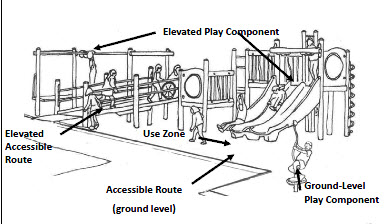
Play components
The number of play components that must be on an accessible route is determined by how many “elevated components” are provided. There is a table in the ADA that we use to determine that number. But a minimum of one of each type of ground level component should be provided.
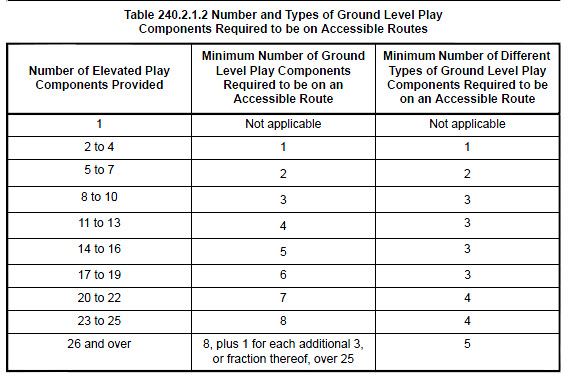
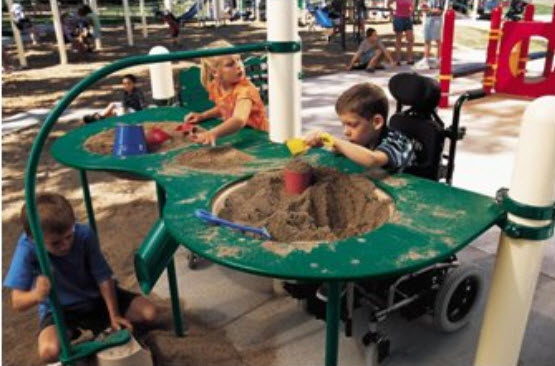
This table sand box is considered a ground level play component and will require knee and toe clearances for children with wheelchairs to have access
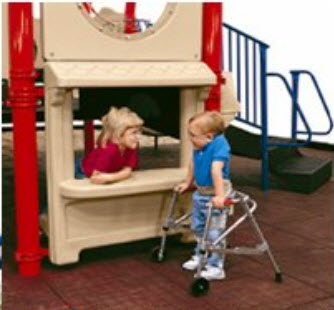
Activity Centers are an example of ground level play component. An accessible route should be provided at the entry and exit. In addition a turning space inside the component and elements within children’s reach ranges should also be provided
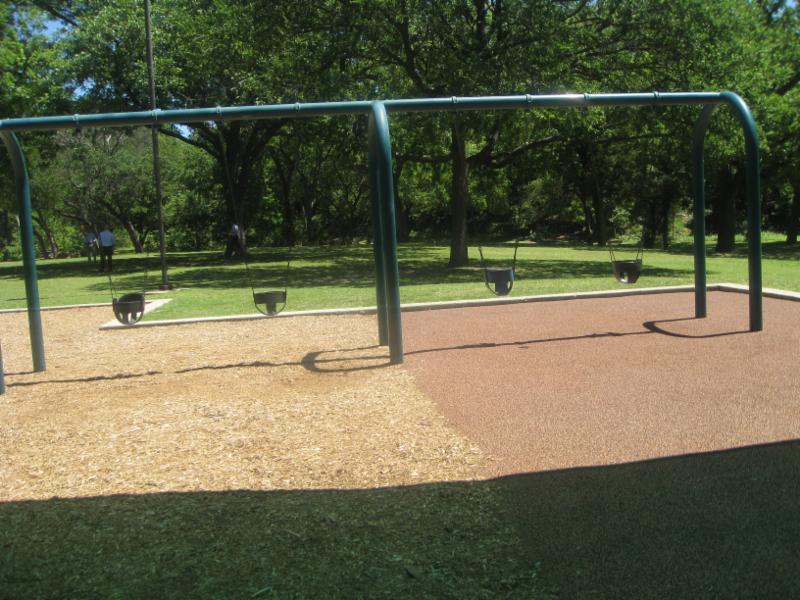
Swing sets are also ground level play components. This picture shows a ground surface that is more stable, but wood chips are also acceptable.
For elevated play components 50% must have either a ramp or a transfer system to access them and be on an accessible route. Ramp runs should have a running slope no steeper than 1:16 and the rise of any ramp shall be no more than 12″ and, where required, handrails must also be provided. Handrails at these ramps do not require an extension at the top and bottom.
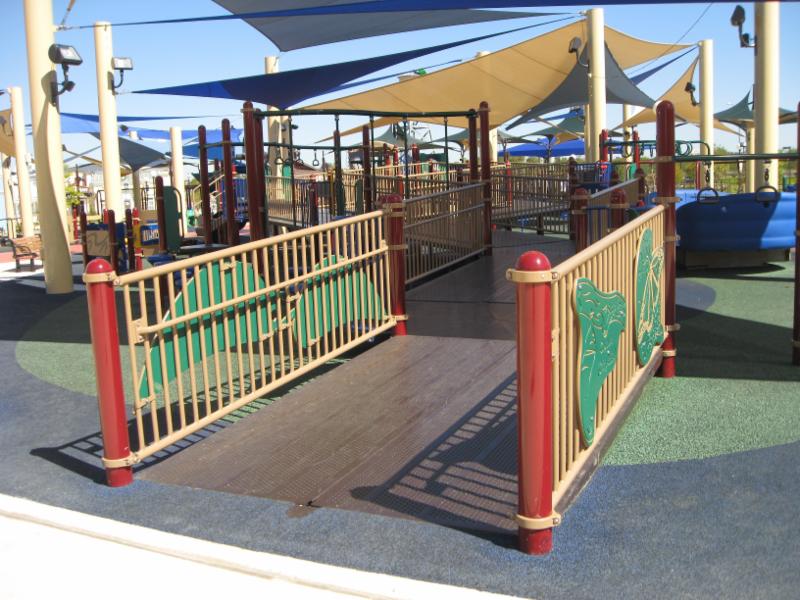
This ramp connects elevated play components. The handrail provided must be between 20″-28″ a.f.f.
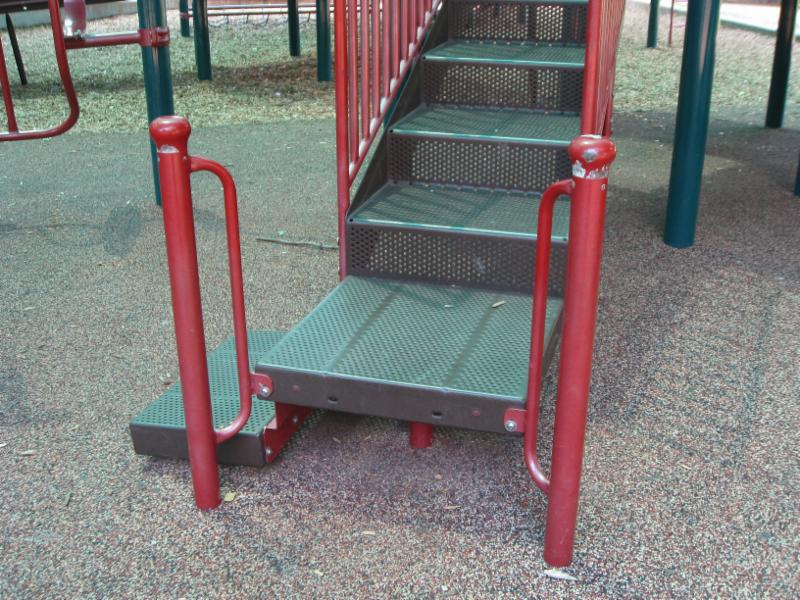
This photo shows both a platform on one side and a transfer step on the other
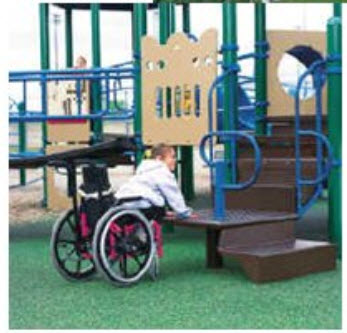
A transfer platform should be between 11″-18″ a.f.f. and should have a clear floor space that is 48″ long centered on the platform
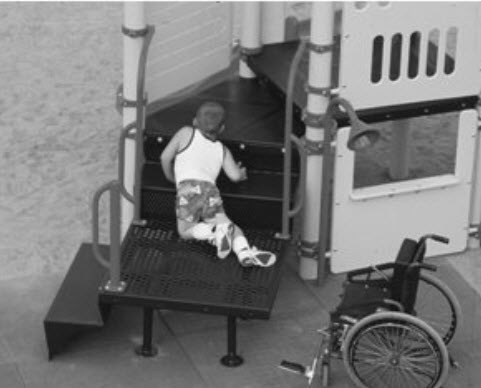
Children with mobility issues will use their upper body to climb the steps once they reach the platform
Besides the accessible route and play components, use zones must be provided adjacent or below the playground equipment. They should have a ground surface that complies with ASTM F1292 (1999 or 2004 edition).
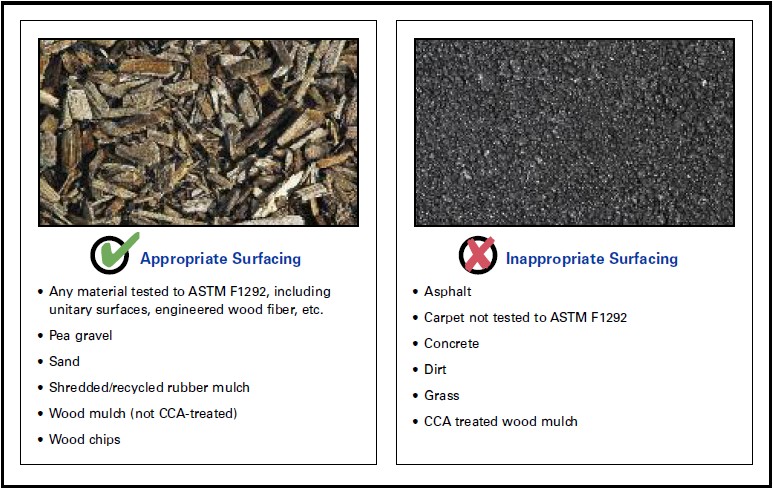
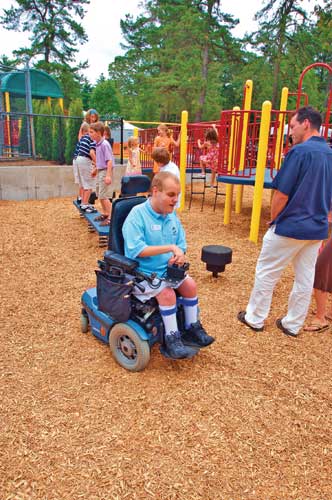
This playground shows the ground surface that complies with ASTM 1292
Interior play areas and soft contained play structures
The play structures and play areas that are located in restaurants and shopping centers must also be accessible. Accessible routes connecting the different play components must be provided. A transfer system is the most common means of access.
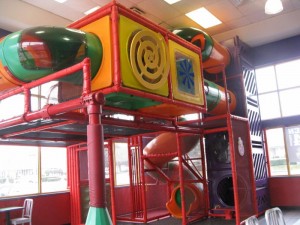
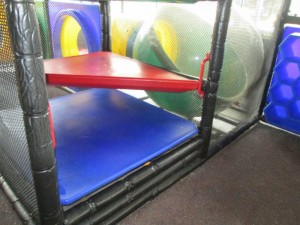
This play structure does not have the required transfer system. A child with disabilities would not be able to enter the structure.
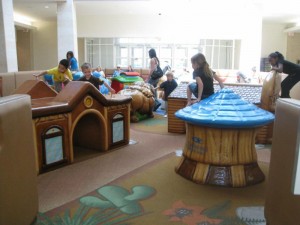
The play components in this play area are considered ground level components and only require an accessible route to the entrance and exit of the component. If there are any operable elements, they should be within reach range.
Need CEUs
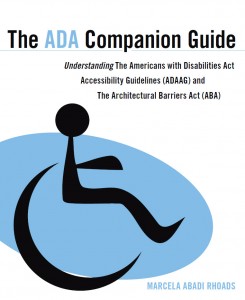
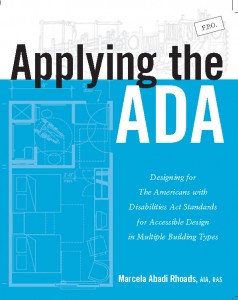
If you have any questions about these or any other topics, please feel free to contact me anytime.
Marcela Abadi Rhoads, RAS #240
Abadi Accessibility
214. 403.8714
marhoads@abadiaccess.com
www.abadiaccess.com
 Abadi
Abadi 
